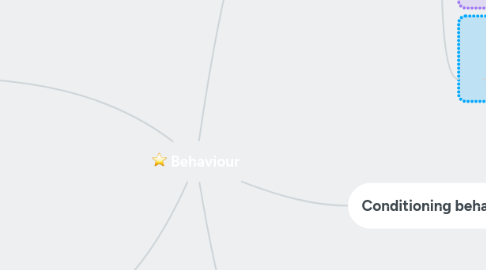
1. Obserable behaviour
1.1. Rejection of the emphasis on the inner working of the mind(especially psychodynamic theory)
1.2. The “ice burg”- Conscious,
2. Environment
3. Personality
3.1. Psychophysical system that creates persons characteristics patterns of behaviour, thoughts and feelings.
3.1.1. Helps us under the basic nature of human beings, to understand development, to provide descriptions of behaviour, to explore the hereditary vs environment debate, to develop intervention, explain motivations, be able to measure it and understand the continuum between normal to abnormal
3.2. Nomothetic approach- large group data, sample, looking into universal variables,
3.3. Idiographic approach- Case study, the individual, qualitative methodology, individual behaviour e.g. interviews.
3.4. The trat approach- Hans Eysenck, wanted to combine theory with empirical evidence, used factor analysis, came up with basic personality dimensions:
3.4.1. Extraversion-Introversion, Neuroticism-Stability and Psychoticism, Eysenck Personality Questionnaire (EPQ 1975) Extroberted- Active, outgoing, sociable, leadership. Unstable- moody, sober, aggressive, restless. Introverted- Quiet, unsociable, passive, careful, thoughtful.
3.4.2. oblique and orthogonal factors
3.5. Person-situation controversy, Walter Mischel (1968)
4. Conditioning behaviour
4.1. Skinner
4.2. Pavlov's dog
4.3. Black Box approach
4.3.1. Stimulus then response but cant see in the box. E.g. extend hand and the other person would too so we don’t need to see the mind
4.4. Social learning
4.4.1. Bandura
4.4.1.1. People learn from reinforcement and punishment but also by watching others - Vicarious learning (learning from other through observation)
4.4.1.1.1. Bandura follows the behaviourist tradition - concerned with exploring observable behaviour
